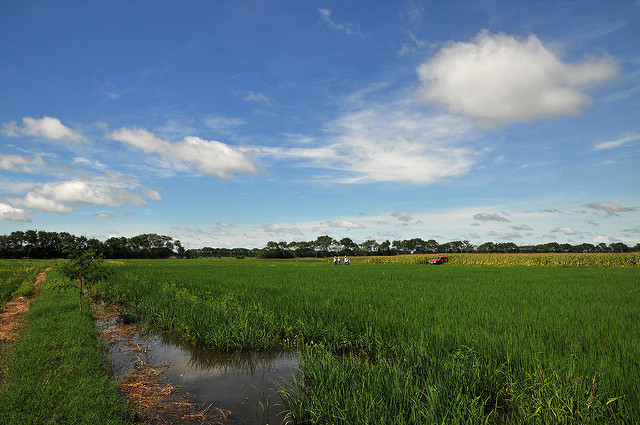Saharan Girls | Photo: Michal Huniewicz, CC BY 2.0
This week’s top stories include a new study of skin pigmentation in Africa, a worrying development under the Dotson Ice Shelf in Antarctica, and an archaeological discovery about rice domestication (in South America!). It’s the science and technology roundup for Sunday, October 15, 2017!
Skin Colour Study
“Race,” by which we mean groups of humans that are somehow genetically distinct, is a scientifically bankrupt idea. You’re equally likely to find less genetic variation between two members of different populations as between two members of the same population. But for some reason (hint: it’s racism. The reason is racism) certain people (racists) seem to believe that skin colour has some relationship to overall genetic variation. And now a new study of skin colour variation among Africans puts another nail into the coffin of that incredibly outdated, incorrect idea. The study, by a team at the University of Pennsylvania, found that just six genes represented 29% of the variation in skin tone in the people they measured—for comparison, the Atlantic article about the study points out that “a similar and much bigger study identified hundreds of genes that affect one’s height, but that collectively account for just 16 percent of the variation that you see in large populations.” What’s more, for a long time it’s been thought that humans with dark skin were somehow preserving something from our more primitive ancestors, but the study found the reverse: many of the genetic markers that create pale skin evolved very early, before humans were even recognizably human. And on top of that, one of the genes responsible for pale-skinned Europeans is shared by a group called the San in Botswana. Anyway, you need to check out the coverage of the study either at The Atlantic or the NYT. It’s pretty cool.
Thin Ice
If you’ve ever put a sheet of ice in the sink and run water over it, you’ll know that the place the water runs over the most melts the fastest, and that’s just what’s happening to Antarctica’s Dotson Ice Shelf in the Amundsen Sea. As published in a new study in Geophysical Review letters, scientists have been using ESA’s Cryosat and Sentinel-1 satellites to measure the rate of thickness change in the ice shelf, and have found that, because of the water currents underneath the shelf, it’s not thinning uniformly. Instead, it’s thinning all in one spot in a long channel underneath the ice, meaning that in places it could be worn through in as few as 40-50 years, as opposed to the roughly 200 previously predicted. It won’t necessarily be catastrophic, as ice sheets have a tendency to adapt to new stresses over time, but if it were to disappear, it would increase the speed of sea level change by allowing more landbound ice to move into the ocean. So all in all: faster melting isn’t a good thing. You can read the article at Geophysical Review Letters, or a summary at BBC News.

Rice For All
A new archaeological study has convincingly argued that rice was domesticated in South America roughly 4000 years ago, making it the only wild plant to have been independently domesticated on three separate continents. In looking for archaeological evidence of cassava consumption in a dig at Monte Castelo in Brasil, the team instead found mineralized remains of parts of plants (in this case rice) called phytoliths. By studying hundreds of samples from different layers of the site, and noting that they increased in size and number over that time, they could tell that rice was being selectively bred for human consumption. This adds South America to Asia and Africa as the third place and time it was domesticated. But you won’t fund much of this variety of rice being cultivated there today: the crop was apparently abandoned when European migrants arrived and conquered the continent. You can read more about the study at AAAS Science Magazine.
Best of the Rest
As usual there’s more to the news than I can handle, so here’s all the stuff I didn’t get to!
- They handed out the Economics “Nobel” for figuring out that people don’t actually act in their own best interests
- Equifax was (unbelievably) hacked again, because of course it was
- New links have been found between dreaming and daydreaming
- Elle did another movie breakdown, this one on the Kingsman sequel
- Astronomers have found a whole lot of “missing” atoms
- Scientists think studying mass extinctions might help us with modern conservation, and
- After twelve years, Sony’s finally making another robotic dog (and it’s not the Aibo)
That’s all for today, folks. Have a great week.


